
As a car owner, you’ve likely encountered statements like “SUVs are safer than smaller vehicles,” “Warm up your engine before driving, especially in winter,” or the recommendation to “use premium gas if you want to maintain a clean engine.”
But how accurate are these pieces of advice? Apparently, not very. This raises the question: how many of the common car myths listed below do you still adhere to? Continue reading to figure out whether your beliefs align with myth or fact.
Use Premium Fuel for a Cleaner Engine: Myth or Truth?

In the past, high-performance engines with high compression ratios required premium fuel, and the impact on the car’s performance was noticeable.
Nowadays, saving money by not opting for premium gas in a high-performance engine may be cost-effective in the short term, but it’s not a wise decision in the long run (those engines are expensive). However, if you have a regular sedan for daily commuting or family duties, there’s no need to worry.
Verdict: It’s complicated
Placing a Car’s Battery on Concrete Damages It, Myth or Truth?

According to this myth, placing a car battery on concrete will cause irreparable damage and drain its life. Placing it on concrete may have drained all of its power in the early days of batteries, nearly a century ago, but not today.
Placing it on concrete may have drained all of its power in the early days of batteries, nearly a century ago, but not today. What truly drains a battery is having the battery sit for too long.
Verdict: Myth
An American Car Means American Made, Truth or Myth?

When encountering the term “American-made car,” it might lead you to believe that the car was conceived, built, and produced entirely in America.
What it truly signifies is that the car was designed in the United States. Some components are outsourced to foreign countries due to cost-effectiveness. American cars can also be produced abroad for the same reason.
Verdict: Myth
You Can Fill Your Car With More Gas During the Day

This misconception is rooted in the notion that gas is denser after a cold night, enabling you to acquire more gasoline for each gallon pumped into the tank. While it is accurate that gasoline expands as the temperature rises, this myth is unfounded.
Consumer Reports tested this concept and determined that the density of gasoline is unaffected by ambient temperature. This is because gasoline is stored in deep underground tanks, and its density remains constant throughout the day.
Verdict: Myth
Low Mileage Cars Are Always Good, Truth or Myth?
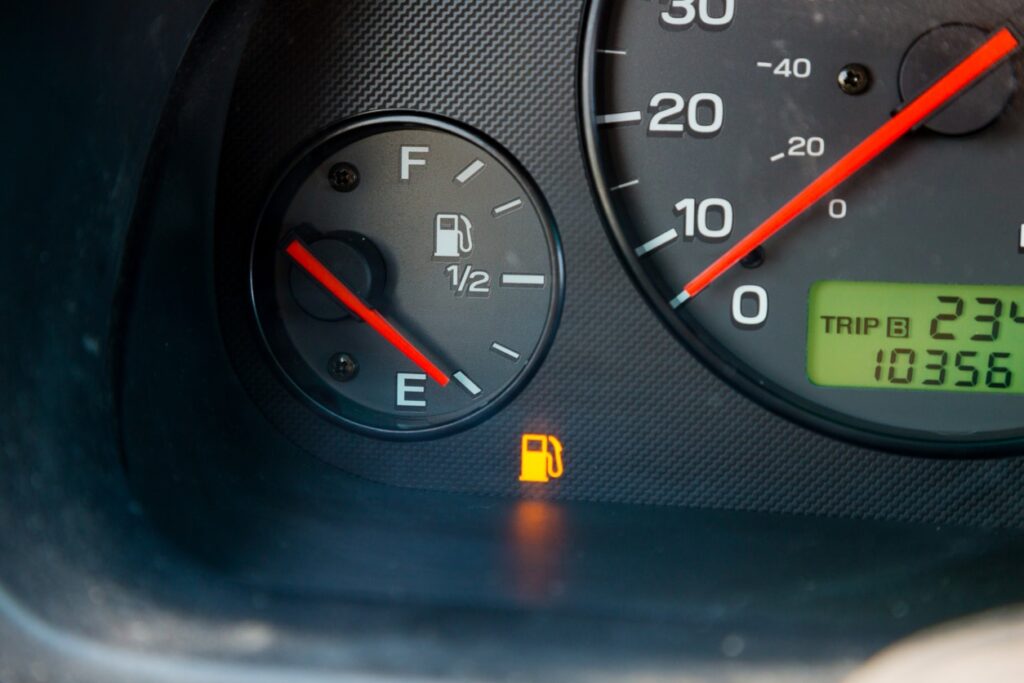
When seeking a new car, we often assume that a vehicle with the lowest mileage is the optimal choice, and typically, this would be correct if not for one caveat. It is essential to ensure that the car has not been idle for an extended period. A reliable engine is one that has been regularly used.
To ensure you are steering clear of potential issues, a thorough inspection of the car, including under the hood, and a check of its title for history are necessary. A car that has sat unused for too long may present reliability issues with the battery or other undisclosed reasons.
Verdict: It’s complicated
Hybrids Are Slow, Truth or Myth?

Hybrids weren’t merely slow to gain popularity when they initially entered the market; they were sluggish. The 2001 Toyota Prius serves as an excellent example, taking over 12 seconds to reach 60 mph. However, within just a few decades, hybrids have made significant advancements.
Hybrid batteries are now more fuel-efficient, powerful, and speedy. The SF90 Stradale stands as Ferrari’s fastest automobile and the world’s fastest hybrid, boasting a top speed of nearly 210 mph and an acceleration to 60 mph in less than 2.5 seconds!
Verdict: Myth
Tap Water Can Be Mixed With Coolant, Myth or Truth?

At some point, everyone has heard that combining tap water and coolant in the radiator is entirely safe for your vehicle. While coolant can be mixed with distilled water, it should never be mixed with bottled or tap water.
Unlike distilled water, tap or bottled water contains minerals. Mineral deposits in the radiator and cooling channels of the engine can lead to overheating and, eventually, catastrophic engine damage. To top off your coolant, use only pure, distilled water.
Verdict: Myth
If You Run Over a Nail, You Need a New Tire, Myth or Truth?

It is a common misconception that running over a nail and puncturing your tire automatically necessitates the purchase of an expensive new tire. The good news is—there are exceptions! As seen in the picture above, if the nail is on the outside of the tire, you’re out of luck.
On the flip side, if it is in the center—rejoice! An auto repair shop may be able to simply patch your tire and send you on your way.
Verdict: It’s complicated
Dirty Cars Are More Fuel Efficient, Myth or Truth?

Apparently, the theory behind this notion is that dirt and mud fill the cracks and crevices in the car, enhancing airflow and reducing drag. Even the Mythbusters set out to test this idea, so it doesn’t seem entirely ridiculous.
As anticipated, the myth was dispelled. Due to its impact on aerodynamics and airflow, the efficiency of dirty cars is reduced by up to 10% compared to clean cars. If your vehicle has been carrying the burden of this misconception, it is advisable to promptly take it to the carwash.
Verdict: Myth
Coolant Color Doesn’t Make Any Difference, Myth or Truth?

You might have believed that the color of coolant makes no difference, and we are here to clarify that this belief is incorrect. It is crucial not to mix coolants with different colors and formulations, as this can lead to the dilution of inhibitors and result in corrosion.
Identify the OEM-recommended coolant for your vehicle and use that. If you have a new car, figure out what coolant formulation is already in your car.
Verdict: Myth
An Oil Change Is Necessary Every 3,000 Miles, Myth or Truth?
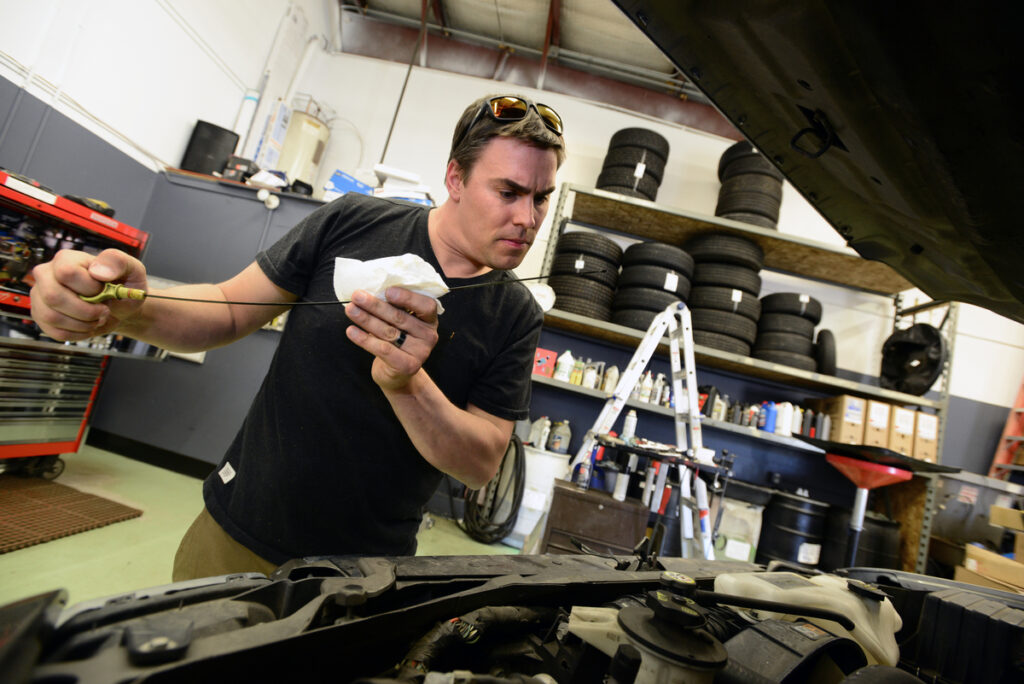
Car dealers typically recommend oil changes every 3,000 miles. Oil and filter changes were once regularly required to maintain the engine’s optimal performance.
Thanks to advancements in engine durability and oil quality, most vehicles can now safely go for oil replenishments every 7,500 miles. Several manufacturers, such as Ford and Porsche, recommend oil changes every 10,000 miles. If you use synthetic oil in your car, you can extend the interval to 15,000 miles between oil changes!
Verdict: It’s complicated
All SUVs Are Specially Designed for Off-Road Adventures

SUVs were originally engineered to perform effectively on both smooth and off-road terrains, serving as a hybrid between conventional road vehicles and off-road counterparts. In recent years, SUVs have undergone significant evolution, featuring larger wheels and incorporating various futuristic technologies such as massaging seats, TVs, and eco-friendly systems.
Presently, manufacturers no longer exclusively prioritize building SUVs with off-road capabilities. However, a few exceptions, like the new Mercedes G Class, remain unstoppable in challenging terrains like snow, sand, or mud.
Verdict: It’s complicated
You Should Wipe Your Oil Filter Clean, Myth or Truth?
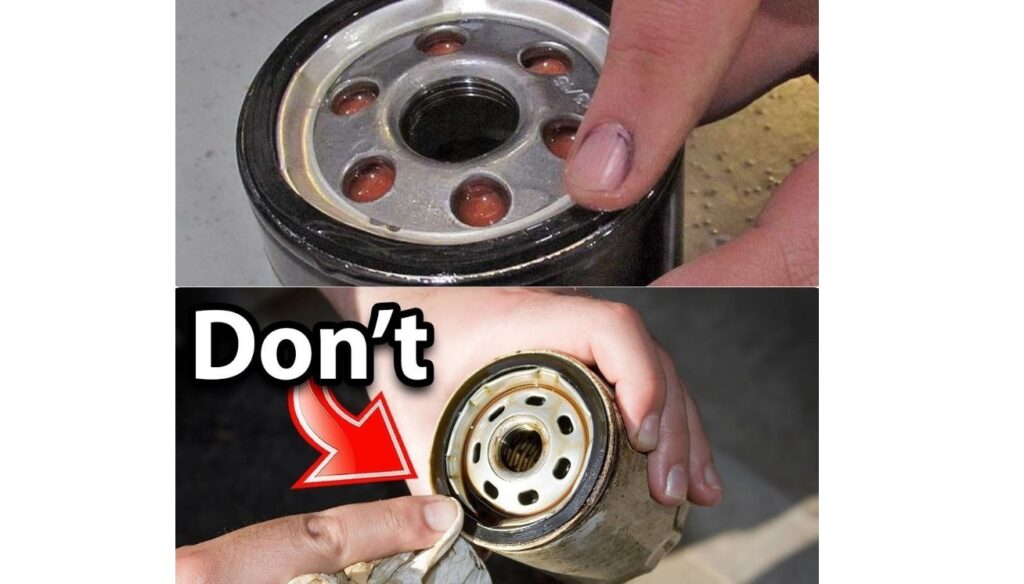
When changing your oil filter yourself, a common misconception is to believe that wiping the filter dry of oil is necessary. However, doing so can create a loose-fitting seal, potentially causing the seal to dislodge and spill oil.
Instead, after filling your filter with oil, be sure to apply a bit of excess oil around the filter’s seal before installation.
Verdict: Myth
Coolant Hoses Don’t Need Replacement, Myth or Truth?
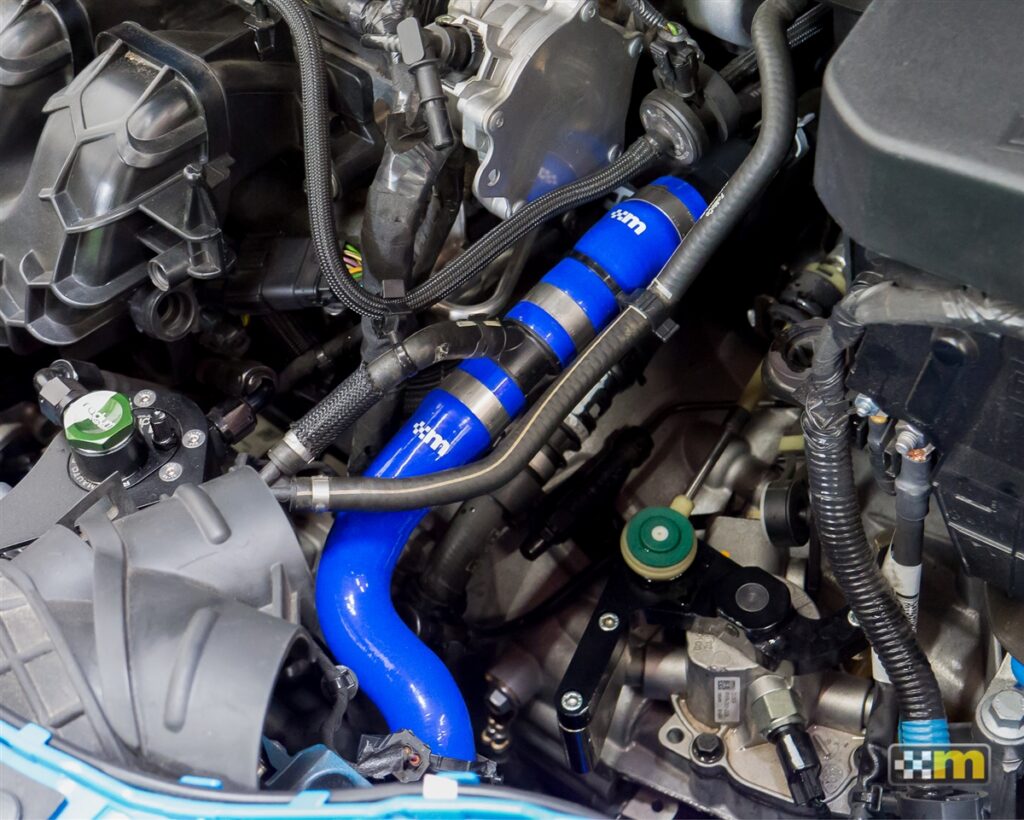
A prevalent issue faced by vehicle owners is the deceptive appearance of coolant hoses, which may seem sound externally but have deteriorated internally. The inner walls of the hoses harden over time, compromising their ability to absorb engine vibrations, a function they are designed to perform.
To prevent this, it’s crucial to ensure that your hoses undergo regular checks during routine services. If replacement becomes necessary, opt for quality parts.
Verdict: Myth
Starting an Engine Consumes More Fuel than Leaving it Idle

Another widely held belief among automobile owners is that keeping the engine running when the vehicle is stationary for more than 30 seconds conserves fuel. This belief stems from the notion that starting a car consumes more fuel than idling it.
Modern fuel injection systems are highly efficient, requiring significantly less gasoline than what is needed to sustain the engine at idle. Unless your vehicle has a carburetor, it’s advisable to turn off the engine when stopping for more than 30 seconds to save petrol.
Verdict: It’s complicated
You Can Use Plain Water Instead of Coolant, Myth or Truth?

This is a big no-no and has the potential to cause serious damage to your engine. Water is corrosive and can lead to rusting, resulting in engine failure. Additionally, water has a low boiling point, making it an inadequate substitute for coolant as it can cause engine overheating in warm climates.
In colder climates, water can freeze, leading to blockages in the radiator veins and affecting the cooling system. Most coolant manufacturers recommend a 50/50 mix of water and ethylene glycol.
Verdict: Myth
You Can Use Your Phone When Pumping Gas, Myth or Truth?

Do you remember the early days of mobile phones, with their large size and extendable antennae? This myth might have held some truth back then, as a discharge from a phone’s antenna could potentially ignite fuel, causing a fire or explosion.
While there are no documented incidents supporting this claim, it was not entirely implausible. However, with the advent of internal antennas in modern phones, it has been conclusively demonstrated that wireless signals from modern phones do not ignite gasoline.
Verdict: Truth
Performance Chips Affect Your Car’s Power, Myth or Truth?

If you’ve ever considered buying a high-performance car, you’ve likely encountered “low-cost performance chips” that claim to enhance horsepower. Surprisingly, the majority of these chips prove to be useless. These plug-and-play chips are purported to swiftly increase your power. Is that even possible?
To truly boost power, you would be better off having your Engine Control Unit modified or opting for mechanical engine enhancements. In any case, instead of wasting money on a performance chip, seek guidance from your local tuning shop.
Verdict: Myth
Cash Payment is Always a Better Deal, Myth or Truth?

The common belief is that when purchasing a new car, paying with cash is always the preferable option. Why? Some customers expect a discount on the sticker price when paying in cash.
However, if you seek a discount, it may not be as substantial as anticipated. Having cash ready for payment leaves less room for negotiation. If you are certain about paying cash for your new car, it is better not to mention it until the price has been agreed upon.
Verdict: It’s’ complicated
Fueling Up on Off-Brand Gas Can Harm Your Engine, Myth or Truth?

There is a widespread misconception that using inexpensive, off-brand gasoline can damage your engine. The reality, however, is a bit different. Off-brand gas stations, along with major chains like BP or Shell, often utilize a refinery’s “base gasoline.” The difference lies in the quantity of additional additives each brand incorporates.
Additives contribute to cleaning the engine, so a gas blend with a richer composition would be more beneficial for your car. This does not imply that using non-branded gas will harm your engine. A blend with fewer additives still must meet regulatory standards and will not cause damage to your vehicle.
Verdict: Myth
Replace All Four Tires At the Same Time, Myth or Truth?

Replacing all four tires simultaneously may seem logical. Whether you should do so generally depends on tire wear and your drivetrain. Front-wheel-drive and rear-wheel-drive vehicles typically necessitate replacing two tires.
However, all-wheel-drive vehicles require the entire set to be changed. Differentials in all-wheelers distribute the same torque to each wheel, so a different-sized tire can strain the differential, potentially causing damage to the powertrain.
Verdict: It’s complicated
Keeping Your Coolant Full Is Enough, Myth or Truth?

It is widely believed that keeping a full coolant tank is the primary consideration in coolant management. This belief is inaccurate. The quality of your coolant is equally crucial. Coolant deteriorates similarly to engine oil, underscoring the importance of regular coolant flushes.
Simply draining out old coolant and refilling the reservoir is insufficient. Contaminants that accumulate in the system need to be removed. High-quality coolant will shield your vehicle from corrosion and potential damage.
Verdict: Myth
Keeping a Vehicle Warranty Valid Doesn’t Matter, Myth or Truth?

According to AAA, 31% of people think that all services must be performed at the dealer to maintain a vehicle warranty.
However, this is not accurate. Consumers can have routine maintenance and repairs carried out at any facility of their choice. It is essential for consumers to document any work done by a facility other than the dealer or manufacturer to uphold the warranty.
Verdict: Truth
A Small Leak In Your Coolant is Okay

If you see coolant leaking from beneath your car, it demands attention. A leak in the coolant reservoir requires addressing, as it may eventually crack open and potentially cause permanent damage. If the issue is a leaky hose, it could eventually burst, leading to a complete loss of coolant.
Such avoidable mishaps can result in significant expenses. Moreover, dumping coolant into surface waters is against the law due to its poisonous content, posing a threat to nearby bodies of water. Save both your wallet and the environment from harm.
Verdict: Myth
A Smaller Car Means Less Fuel Consumption, Myth or Truth?

It’s logical to assume that a smaller car would consume less fuel than a larger one. Larger vehicles are typically heavier, less aerodynamic, and equipped with more powerful engines.
Downsizing can significantly impact fuel efficiency. Many SUVs nowadays feature smaller engines, and naturally aspirated engines are less common. It’s worth noting that larger cars have also become more aerodynamic over time, resulting in improved fuel economy. The 2019 Toyota RAV4 serves as a good example, achieving over 35 MPG on the highway.
Verdict: Truth
A 4WD Needs Snow Tires In Snow, Myth or Truth?

While a four-wheel-drive system enhances snow driving, there’s no substitute for snow tires. In snowy conditions, 4WD accelerates faster, but effective tires are essential for controlled maneuvering and quick braking.
Summer tires lack the grip needed for emergency braking in the snow, potentially causing the vehicle to lose control. Whether or not your car has 4WD, having proper snow tires is crucial, especially when navigating snowy mountain roads.
Verdict: Truth
Engine Warm-Up is a Must, Myth or Truth?

This is one of the most widely accepted misconceptions. Many believe that idling a car before driving is crucial, especially on chilly winter days. While it takes time for an engine to reach its optimal operating temperature, idling is entirely unnecessary for this purpose.
Modern cars have the technology to automatically warm up the engine, achieving the appropriate temperature more efficiently while driving. Idling only wastes fuel and emits excessive carbon monoxide. The reason people do this is to warm up the interior of the car.
Verdict: Myth
Every Time You Change Your Oil, Flush Your Coolant, Myth or Truth?
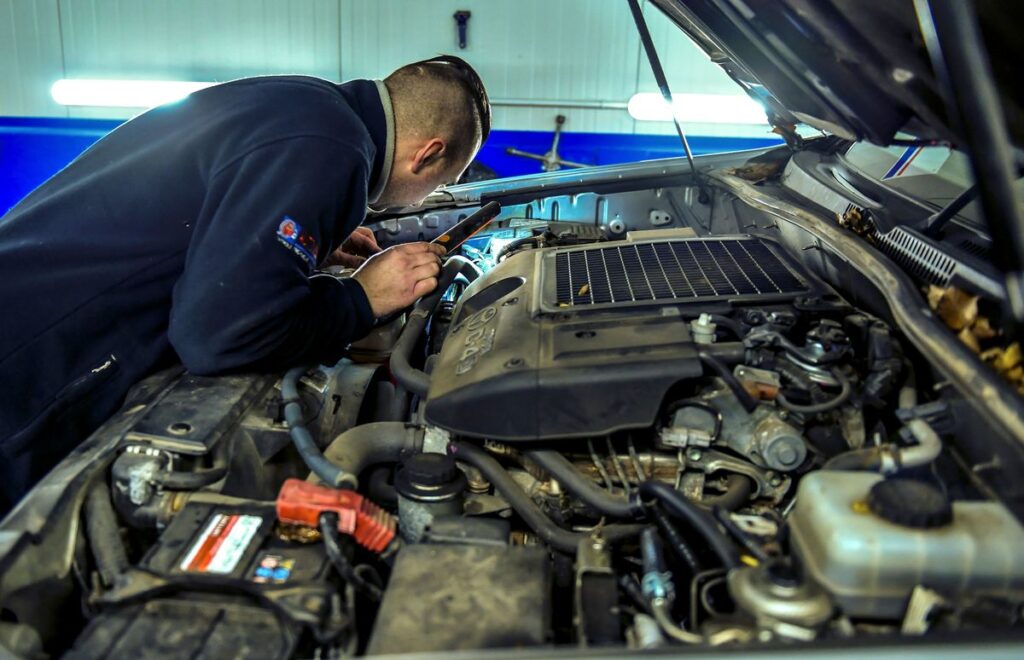
Some believe that flushing the car’s coolant should be done every time you change the oil. However, doing so regularly is entirely unnecessary and won’t enhance the cooling system’s durability, only increasing expenses.
Manufacturers typically recommend changing coolant every 60,000 miles or once every five years. Regularly check the coolant level, and if it drops suddenly, there may be a leak.
Verdict: Myth
Vegetable Oil Can Be Used In Diesel Cars, Myth or Truth?

A 50-year-old tractor running on cooking oil might work for a diesel, but using vegetable oil in modern cars can have severe consequences. The engineering in old diesel engines is much simpler than in contemporary vehicles, and pouring cooking oil into a modern tank can lead to dire repercussions.
The viscosity difference between vegetable oil and petroleum diesel causes issues when powering a modern diesel engine. Due to its thickness, the engine may struggle to properly atomize the vegetable oil, resulting in an excessive amount of unburned fuel.
Verdict: Myth
Fuel Is Wasted When Using a Start-Stop System, Myth or Truth?

The notion that a car’s start-stop system increases fuel consumption by frequently turning the engine on and off is a misconception. Additionally, the belief that using the system can permanently damage a car battery is unfounded.
Contrary to these claims, testing reveals that cars equipped with a start-stop system can save up to 15% more petrol compared to those without the system. The start-stop system not only reduces emissions but is also entirely safe for the car’s battery, debunking this myth.
Verdict: Myth
Red Car Attracts More Attention, Myth or Truth?

The idea that a red car attracts more attention is another myth that originated from the prevalence of exotic red cars in recent years. While some studies suggest that specific types of cars may be more prone to being pulled over, there is no evidence supporting the notion that red cars are pulled over more frequently.
Exotic cars, often painted in red, might be more susceptible to traffic offenses, leading to more frequent stops and increased attention due to their distinctive appearance.
Verdict: It’s complicated
Dishwashing Soap Can Be Used to Wash Your Car, Myth or Truth?

Using dishwashing soap or any chemical not designed for cars to wash your car is a terrible idea. While it may save a few pennies, it can strip the wax and damage the paint.
Cars with paint damage may require repainting, which can cost at least $500 for a single coat of low-quality paint. Higher-quality paint jobs are likely to cost over $1,000. Considering the long-term impact, it’s advisable to invest a little extra money in proper car care.
Verdict: Myth
Aluminum is Safer Than Steel, Myth or Truth?

The belief that aluminum is inherently safer than steel is based on a density difference between the two materials. If car manufacturers were to replace steel with an equivalent amount of aluminum without adjustments, it could result in decreased safety. However, automakers take measures to ensure that aluminum vehicles are as safe as those made of steel.
To compensate for the density difference, automakers use more aluminum and increase the thickness of the vehicle. Some sources, such as Drive Aluminum, claim that an aluminum body is safer than a steel body, emphasizing that aluminum has a higher crush zone and better energy absorption upon impact.
Verdict: Truth
Korean Companies Manufacture Low-Quality Cars, Myth or Truth?

Debunked. Korean brands like Hyundai and Kia currently lead the J.D. Power Dependability Study, surpassing Japanese brands like Honda and Toyota. Due to intense market competition, Korean cars are designed to be more reliable, fuel-efficient, and affordable compared to their competitors’ offerings.
Customer satisfaction, evaluated by the ACSI Automobile Survey, considers factors such as reliability and driving performance. Hyundai ranks among the top 20 automobile manufacturers and is also placed in the top 10 automobile brands by J.D. Power.
Verdict: Myth
SUVs Are Better Than Smaller Units, Myth or Truth?

According to the Insurance Institute for Highway Safety, “A larger, heavier vehicle provides superior collision protection than a smaller, lighter vehicle, assuming [there are] no other changes.” However, SUVs have a higher center of gravity, making them more prone to rollovers on tight turns or during a crash. Despite having larger brakes, SUVs require an extended braking distance to come to a stop.
Despite these challenges, automobile manufacturers are diligently enhancing the safety features of their SUVs by incorporating various traction and stability systems along with powerful brakes.
Verdict: It’s complicated
Your Dead Battery Can Be Resurrected With A Jump, Myth or Truth?

If you’ve ever had to jump-start your car when the battery died, you know this myth is untrue. It is advisable to keep the engine running after jump-starting a dead battery, especially in winter when it can take hours to recharge.
The battery, tasked with powering accessories like the car radio and lights, requires additional time to fully recharge. For a depleted battery, using a car battery charger is a more effective option.
Verdict: It’s complicated
Electric Cars Are Prone to Start Fires, Myth or Truth?

One prevalent myth surrounding electric vehicles is their alleged higher susceptibility to fires compared to gasoline-powered vehicles. Despite a few electric car fires making headlines, the myth persists.
While a malfunctioning lithium-ion battery could generate heat and potentially cause a fire, gasoline is considerably more flammable. Tesla claims that based on the rate of car fires per one billion miles driven, a gasoline-powered car is 11 times more likely to catch fire than an electric car.
Verdict: Myth
Low Tire Pressure Makes for a Smoother Ride, Myth or Truth?

Some vehicle owners purposefully deflate their tires, hoping for a smoother ride, a practice particularly prevalent among RV and truck owners. However, far from enhancing comfort, underinflated tires not only reduce fuel efficiency but also pose a significant safety hazard.
Low tire pressure increases the tire’s surface contact with the road, causing more friction, leading to overheating, early tire degradation, tread separation, or even a blowout. Underinflation does not contribute to a smoother ride.
Verdict: Myth
ABS Constantly Shortens Braking Distance, Myth or Truth?

This is another prevalent myth, but it’s only partially accurate and depends on specific conditions. Anti-lock Brake Systems (ABS) prevent wheel lock during hard braking, aiming to keep the driver in control rather than consistently shortening the stopping distance.
According to the National Highway Traffic Safety Administration, cars equipped with ABS had a 14 percent shorter braking distance on wet roads compared to non-ABS cars. However, under normal, dry conditions, the braking distance is essentially the same between a car with ABS and one without.
Verdict: Myth
Having Your Tailgate Down While Driving Increases Fuel Efficiency, Myth or Truth?

In the United States, it’s common to see pickup trucks driving with their tailgates down. Some truck owners believe that this improves airflow and fuel economy.
Contrary to this belief, driving with the tailgate down creates more drag, reducing fuel efficiency. When the tailgate is closed, a vortex forms around the truck bed, enhancing aerodynamics. While driving with the tailgate down may generate more drag, the impact on fuel efficiency is minimal.
Verdict: Myth
2WD Cars Brake Slower Than 4WD Cars, Myth or Truth?

Four-wheel-drive (4WD) vehicles, popular for their off-road capabilities, are often thought to have shorter braking distances than rear-wheel-drive (RWD) or front-wheel-drive (FWD) cars.
However, the braking distance is not influenced by the presence of an AWD or 4WD system. Instead, it depends on the type of tires used, especially on wet or snowy surfaces. A car equipped with summer tires will require a longer braking distance on snow.
Verdict: It’s complicated
Boosting Into Overdrive Is Not Like the Movies, Myth or Truth?

The term “shift into overdrive” is a common phrase in video games, movies, and popular culture, often used in street racing scenes, car chases, or to beat traffic. However, the reality of overdrive is far less thrilling than its portrayal in movies.
Overdrive is a unique gear designed to enhance fuel efficiency by allowing the car to cruise at a high speed while maintaining a low RPM. Contrary to movie depictions, engaging overdrive will not make your car louder, faster, or more exhilarating.
Verdict: Truth
Bigger Engines Produce More Power, Myth or Truth?

In the past, powerful cars often featured naturally aspirated V8 engines, like the 1970 Chevy Chevelle SS with its massive 7.4L big-block V8 producing over 400 horsepower. However, current trends in car design have shifted away from large engine displacement.
Modern high-performance cars now prioritize turbochargers over bigger engines. For instance, the new Mercedes A45 AMG achieves 416 horsepower with just four cylinders and a 2-liter displacement, showcasing the efficiency gains from downsizing.
Verdict: It’s complicated
Seat Belts Aren’t Necessary Because of Airbags, Myth or Truth?

There is a misconception that a car equipped with airbags doesn’t require seat belts, which is a dangerous belief. Relying solely on airbags for safety is a misconception that jeopardizes lives.
Airbags complement seat belts by protecting properly belted passengers. The strategic positioning of airbags is based on the assumption that passengers are secured by seat belts. Without seat belts, passengers might slide under or miss the airbag landing zone during deployment, increasing the risk of collision with the dashboard or ejection.
Verdict: Myth
Air Condition Increases Fuel Economy, Myth or Truth?

The debate over whether it’s more fuel-efficient to drive with the air conditioner on or windows open is a perennial summer discussion. Driving with windows down increases drag, theoretically leading to higher fuel consumption.
On the other hand, using air conditioning puts extra strain on the engine, consuming more gasoline. Ultimately, driving with windows closed and the A/C turned off proves to be the most fuel-efficient option, saving more gas than using air conditioning.
Verdict: Myth
Car Crashes Are Always Lethal in Convertibles, Myth or Truth?

The assumption that car crashes are invariably lethal in convertibles arises from the belief that removing a car’s roof weakens its overall structure, compromising safety. However, manufacturers take extensive measures to ensure that convertibles are as safe as hardtops.
Convertible cars feature a robust chassis, reinforced pillars, and specialized roll hoops behind the seats, enhancing driver safety, particularly in the event of a rollover. Certain convertibles, like the 2016 Buick Cascada, even incorporate active roll bars that automatically deploy when the vehicle overturns.
Verdict: Myth
Manual Cars Are More Fuel-Efficient Than Automatics, Myth or Truth?

In the early days of automatic transmissions, they were notably less fuel-efficient than their manual counterparts, consuming more gas and experiencing higher breakdown rates. However, modern automatics bear little resemblance to their mid-twentieth-century counterparts.
Today’s automatic transmissions surpass manuals in nearly every aspect. With carefully adjusted gear ratios, modern automatics offer faster shifts, and improved fuel efficiency, and contribute to extending the life of the engine.
Verdict: Myth
Tires should be replaced once the thread reaches 2/32, Myth or Truth?
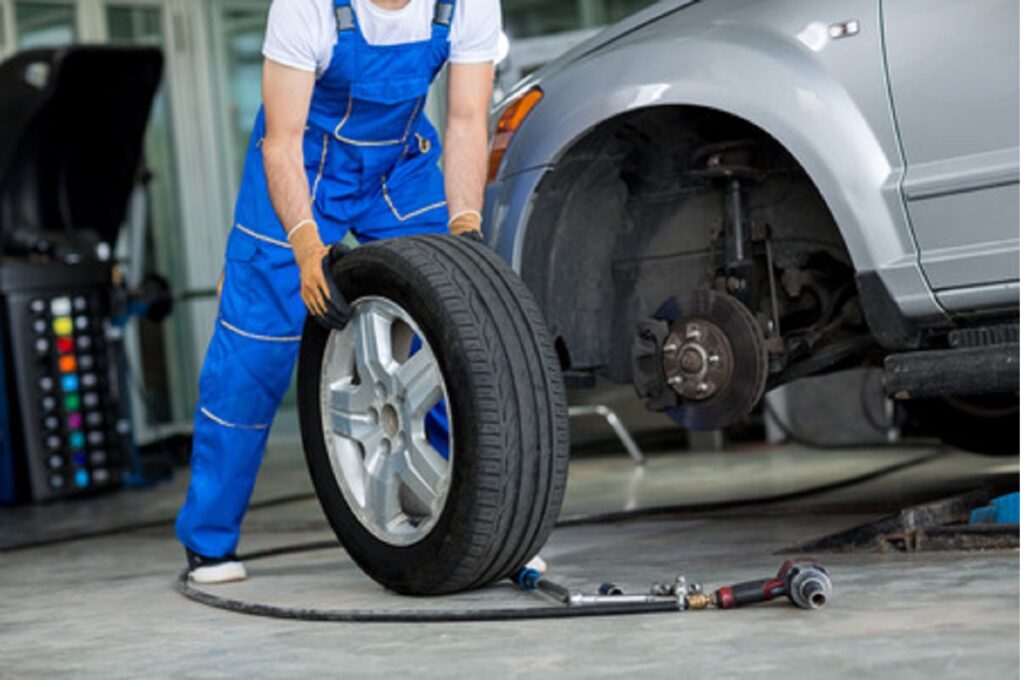
The widespread myth suggesting that tires should be replaced when the tread depth reaches 2/32 is debunked by AAA. Their research indicates that tire performance in wet conditions significantly deteriorates at 4/32, making it advisable to invest in new tires at this tread depth.
Given that tires are the sole connection between your vehicle and the road, driving with worn-out tires poses an unnecessary risk of accidents, especially in wet weather.
Verdict: Myth
Changing the Brake Fluid Is Not Important, Myth or Truth?

A notable 19% of respondents, according to AAA, believe the myth that brake fluid doesn’t require regular changes. This belief is grossly inaccurate. Most manufacturers recommend replacing brake fluid at intervals of two to three years.
Considering that brakes constitute the most critical safety system in a vehicle, adhering to the prescribed fluid changes is crucial. Brake fluid has a propensity to attract and absorb water, leading to corrosion in internal brake system components, potentially resulting in failure or other costly damage to the vehicle.
Verdict: Myth
Your Car Battery Can Last Up to Five Years, Myth or Truth?

The typical lifespan of a car battery falls within the range of 3 to 5 years, with occasional instances of longer durability. However, driving habits and the prevailing climate significantly influence the battery’s longevity.
As reported by AAA, 42% of individuals believed in the misconception that a battery can automatically endure for five years, a potentially hazardous assumption. The only accurate method to assess the remaining life of your battery is through testing around the three-year mark.
Verdict: It’s complicated
Insurance is More Expensive for Red Cars, Myth or Truth?

InsuranceQuotes.com reveals that 44% of Americans harbor the belief that insuring red cars is more costly than vehicles of other colors. While this perception may stem from the association of the color red with boldness and passion in Western culture, the reality is that insurance companies consider various factors when determining rates.
The age of the driver, car make, insurance history, and numerous other elements are taken into account. The color of a car holds no relevance in the insurance pricing equation.
Verdict: It’s complicated
Nitrogen Is Better For Your Tires, Myth or Truth?

While not entirely a myth, there is crucial information to consider. Nitrogen does offer advantages for tire maintenance, such as slower leakage compared to compressed air. However, regular tire pressure checks can eliminate the need to spend extra money on nitrogen.
For those who don’t routinely monitor tire pressure, nitrogen might be a more suitable option. Nevertheless, the cost of draining air and refilling with nitrogen for existing tires can amount to up to $30 per tire.
Verdict: It’s complicated
You Never Need to Replace Your Coolant, Myth or Truth?
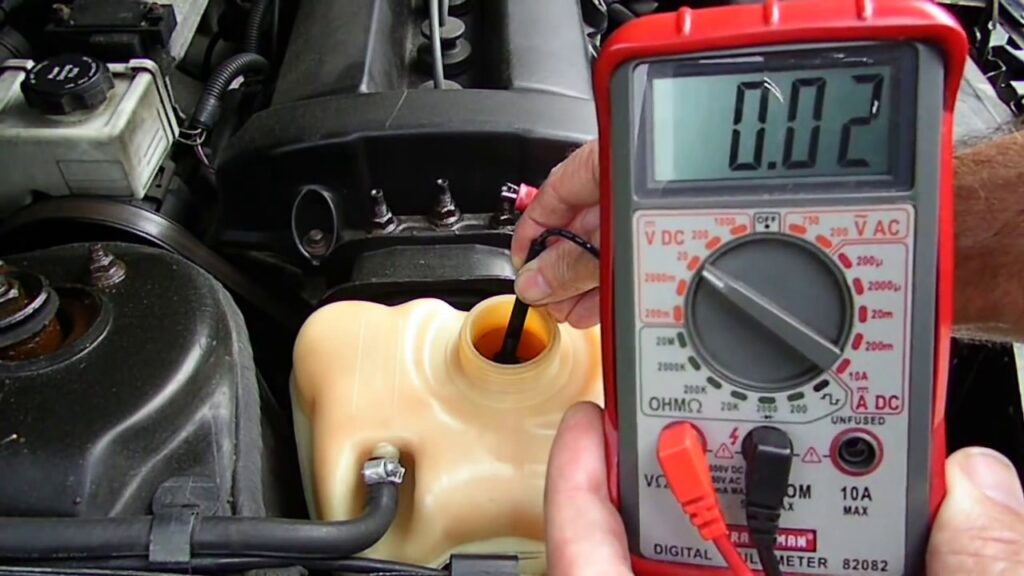
This myth carries significant repercussions for both you and your vehicle. Shockingly, 40% of all engine failures result from coolant system issues. If left unchecked, coolant breaks down and forms rust, leading to corrosion in the cooling system and subsequent engine problems.
For those heavily reliant on their vehicles, it is advisable to test the coolant at least twice a year—prior to winter and again before summer.
Verdict: Myth
Hiding Behind a Car During Gunfire Will Protect You, Myth or Truth?

In many movies, protagonists often seek refuge behind cars to evade incoming gunfire. While certain bullets may lack the power to penetrate steel, relying on a car for complete safety is not a foolproof strategy.
Cars should be viewed as concealment rather than cover. It is hoped that one never has to test this myth, and if faced with such a situation, seeking cover behind a more substantial object is recommended.
Verdict: It’s complicated
Toyota Prius Gets Worse Miles Per Gallon Than BMWs, Myth or Truth?

This myth originated from a 2009 episode of Top Gear, where a powerful BMW was pitted against a hybrid Prius on a track. The BMW seemingly achieved better miles per gallon than the Prius, but a crucial detail was often overlooked.
The test took place on a track, under very specific conditions that favored the efficiency of the M3. The Prius was driven at maximum speed, while the BMW was simply keeping pace, illustrating a significant difference in driving styles.
Verdict: It’s complicated
Muscle Cars Aren’t Good on Corners, Myth or Truth?

The legendary understeer and subpar handling of old American muscle cars are well-known. While a powerful V8 engine and substantial understeer made them fast in drag races, they struggled on turns.
Fortunately, times have changed. Most new muscle cars with potent V8 engines are faster than ever, whether on the track or in a straight line. The 2017 Dodge Viper ACR, for instance, completed a seven-minute lap around the Nürburgring, outperforming cars like the Nissan GTR Nismo and Porsche 991 GT3 RS!
Verdict: Myth
If You Shoot a Car’s Gas Tank It Will Explode, Myth or Truth?

In numerous Hollywood films, characters often shoot at cars, leading to a dramatic explosion. The notion is that the bullet penetrates the gas tank, triggering a spectacular blast.
Mythbusters tackled this myth to uncover the truth. Through experimentation, they debunked the myth. Nevertheless, don’t try this at home.
Verdict: Myth
The Journey Back is Shorter Than the Way There, Myth or Truth?

Although the return journey may subjectively feel shorter than the initial leg of the trip, this doesn’t necessarily equate to a universal truth. Time and perception are intriguing mysteries!
The ‘return trip effect’ is a phenomenon where impatience to reach a destination leads individuals to overestimate the time it takes to arrive. Familiarity with the route can also contribute to this perception.
Verdict: Myth
Electric Cars Are a Fire Hazard, Myth or Truth?

Let’s delve into the science. While it is accurate that lithium-ion batteries exhibit fire characteristics distinct from fossil fuel engines and can release poisonous fluoride gases when on fire, it takes considerably longer for a lithium battery to reach that point.
This means occupants have more time to safely exit an electric car compared to a vehicle with a traditional combustion engine.
Verdict: Myth
Changing Lanes Get You There Faster, Myth or Truth?

The impulse to switch lanes and release pent-up energy on the road might seem relieving, but it may not necessarily serve the purpose of reaching your destination faster.
Interestingly, this urge to change lanes might not be advantageous. Studies indicate that individuals mainly perceive the “rival” passing them and overlook those lagging behind. The point is: to stay in your lane.
Verdict: Myth
Electric Cars Are More Expensive Than Fossil, Myth or Truth?

There is a prevailing myth that electric cars are less cost-effective than traditional fossil fuel vehicles. In part, this holds true, as batteries constitute 30% of the cost of an electric car.
However, the long-term perspective reveals that electric cars exhibit higher residual value, surpassing fossil fuel counterparts. So in the long term where the price point is larger, it can go the distance.
Verdict: Myth
Men Drive Better Than Women, Myth or Truth?

This myth likely stems from historical gender stereotypes that have gradually eroded over time. The erroneous belief that men outperform women in virtually everything has persisted. However, what does the empirical data indicate?
The data unequivocally dismisses this claim as baseless and, importantly, sexist. We should transcend such outdated notions.
Verdict: Myth
Richer Drivers Meaner, Myth or Truth?

Encountering discourteous behavior on the road, often associated with luxury car owners, has led to the stereotype that wealthier drivers exhibit more aggressive tendencies.
Scientific studies lend credence to this perception. Drivers of high-end vehicles are reported to be less compliant at pedestrian crossings and more prone to cutting off others.
Verdict: Truth
Electric Cars Are Made With Polluting Minerals Mined By Children, Myth or Truth?

This intricate myth is unequivocally false. Electric car batteries primarily use lithium derived from two main sources. While mining is one source, it is not the predominant one.
Brine water, sourced from oceans, is another major component, and crucially, it involves no mining and certainly not by children. Moreover, global lithium reserves abound, dispelling concerns about supply limitations.
Verdict: Myth
Electric Car Batteries Only Last a Few Years, Myth or Truth?
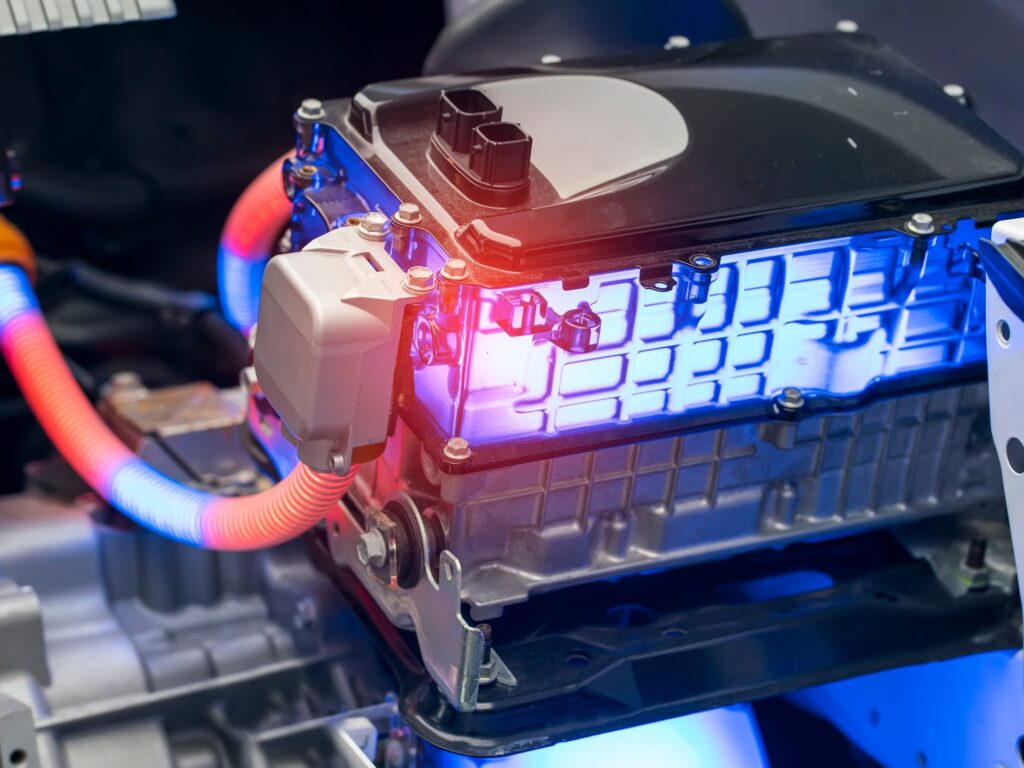
The notion that electric car batteries endure only a short period is a pervasive myth, easily debunked with a closer look. Electric vehicle owners typically charge their cars a few times a month, in stark contrast to the daily charging routine of devices like iPhones.
Examining Tesla owners provides valuable insights, with data indicating a mere 10% average battery degradation after surpassing 160,000 miles. This impressive performance stands in contrast to fossil fuel cars, which are often retired after reaching such high mileage.
Verdict: It’s complicated
